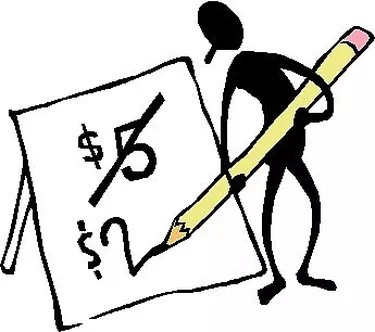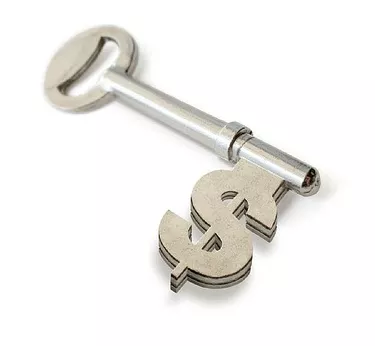
Valuing a bank is different than valuing other kinds of stocks. Knowing most investors (even professional ones!) don't know how to value banks, this article aims to explain in a relatively simple way how to value bank stocks.
Step 1
When you invest in a bank you are not investing in factories or lease operators. They are, for the most part, not as dependant on management. When you invest in a bank you are investing in a group of people using a particular money-making system which is quite dependant on the actions those people have taken, are taking and will take.
Video of the Day
Most banks make most of their money by lending out your savings to good or not so good borrowers. Banks are, in some ways, similar to a hedge fund. They both make bets and they both use leverage (Well, not all hedge funds use leverage, but you get the point right?). The most important difference is that investors/savers that have deposits backed by the FDIC (250,000 or less) face no risk of capital loss. However, just like a hedge fund, if a bank makes enough bad bets it goes bust. This is a simple and important fact.
As we could see in the 2008 financial crisis, a few bad bets can ruin a whole institution if its leverage(debt/borrowed money) is high enough.
Step 2

When you are deciding on whether to buy a bank stock, there should be 2 steps in your analysis:
First (Perhaps after doing some cursory research) you need to be sure that management made good decisions on the past and is making good decisions on the present. In other words, you need to make sure that their business model/strategy was successful in the past and will be stable in the future. There will always be risks, but this way you minimize them.
Secondly, you need to make sure you are buying the bank at an attractive valuation.
You can summarize these two steps in the following sentence: You have to make sure you are buying good assets at a good price. A good bank needs to have good assets, so bank quality and asset quality go hand in hand.
So what exactly are a bank' s assets? Sure they have all the buildings in which their branches are located, but their main assets are their originated or purchased loans and securities. Because the assets are loans, determining if the assets are good requires determining if the loans and other securities are good. This is one of the things that makes valuing a bank different form valuing most other stocks.
Step 3

CURSORY RESEARCH
This should probably be your first step. Before you can start determining the "safety" of the bank' s assets and at what price you would like to buy them, you need to know if you want to buy them on the first place right?
Things to look for here:
Dividend Yield (Do you want a dividend or not? How high? Is it safe?)
Location you like (For example, are you comfortable with owning a bank in Nigeria? Egypt? Korea? You might or might not).
Long term Return on Equity.
Type of bank/Market Cap (small or big).
Step 4
- A GOOD BANK/ASSET QUALITY
Return on Equity is less important on bank stocks than on other non-bank sectors. It is also less of an indicator of the company's quality. Why is this? A bank with a very high return on equity such as 27 or 35 percent, is probably pursuing a quite risky strategy (risky loans or highly leveraged). It could also mean the bank has very little capital reserves or bad loan reserves. Don't get me wrong, there are some high growth banks with relatively high returns on equity that don't take as much risk, but these are not the norm. Nonetheless, a high return on equity is a good sign ONLY if the bank is using its savings wisely.
-Non-Performing or Impaired Loans-
This piece of information is pretty important. If the number is high, such as 5% or more, then the bank has been making loans to the wrong people. An OK percentage would be around 1% and 2%. Also, the higher the leverage the more damage this figure makes.
Looking at year over year changes in these can give you an idea of what management has been doing.
-Tier 1 Capital ratio (Or just bank capital reserves)-
This is the amount of money the bank is not loaning out. This is good in case people pull their money out of the bank and reduces overall risk in the business operations. Perhaps more importantly, banks with high capital levels tend to be equally conservative in all other aspects of the business! When it comes to banks, you want conservative. You should seek capital reserves of 10% or higher.
This is also a good idea if the bank plans on making acquisitions.
-Reserves for losses or Reserves for loan losses-
This in itself is not that important, but if a bank is increasing these it might be expecting a bad situation. More often than not, the situation does arise. For this reason it is important to compare year over year changes in this figure which is normally expressed as a percentage. Keep in mind that the figure going from 0.1% to 0.2% is not necessarily bad news since both figures are low. Anything above 2 and you can be pretty sure bad news are on the horizon.
Step 5

- AN ATTRACTIVE VALUATION
So how do you value a bank/bank stock?
When you value a bank certain pieces of financial information gain value and others lose value. Also, some pieces of information are mostly exclusively used for banks and other financial institutions.
Here are some examples of things to look for in a bank:
When valuing a bank, price to tangible book value is more important than in most other stocks. Better yet, you should probably use price to tangible common equity since it also takes off preferred shares, which are basically debt too. Many banks are quite fond of issuing preferred shares. This is key in the current (2008-2009-2010) environment because there has been a lot of "bailout" money coming into the banks in the form of preferred shares. The lower the price to tangible book or tangible equity ratio, the "cheaper" or more fairly valued the bank will be. Keep in mind that good prospects often command a premium in the market, so some of the best banks are always trading at more "expensive" valuations. I use "cheaper" and "expensive" in quotations, because these depend on the eye on the beholder and on the investor's time frame. Historically, banks have normally traded at more than 3.5 times book value, so you can use this as a benchmark.
Also, banks share other common value metrics with other stocks:
PEG ratio PE ratio Forward PE Dividend
For all of these ratios (except the dividend!), the lower you can get it, the better.
Step 6

When you invest in a bank, you should focus on business safety. You do not want your whole investment to go to the drain because of bad loans made by a bad management, specially if you could see it coming by analyzing the safety of the bank' s money-making-system.
Tip
If you manage to actually get a detailed list of the bank' s loans analyzing this would be good. I do not know how to acquire these... I consider this just basic research, so feel free to learn more (and you should!).
Warning
You should also learn about a bank' s interest rate risk. The most important concept here is the yield curve. When it flattens or gets inverted it puts pressure on bank' s interest income. Also, macroeconomic factors such as unemployment, can have a big impact on financial institutions and their customers.
Video of the Day